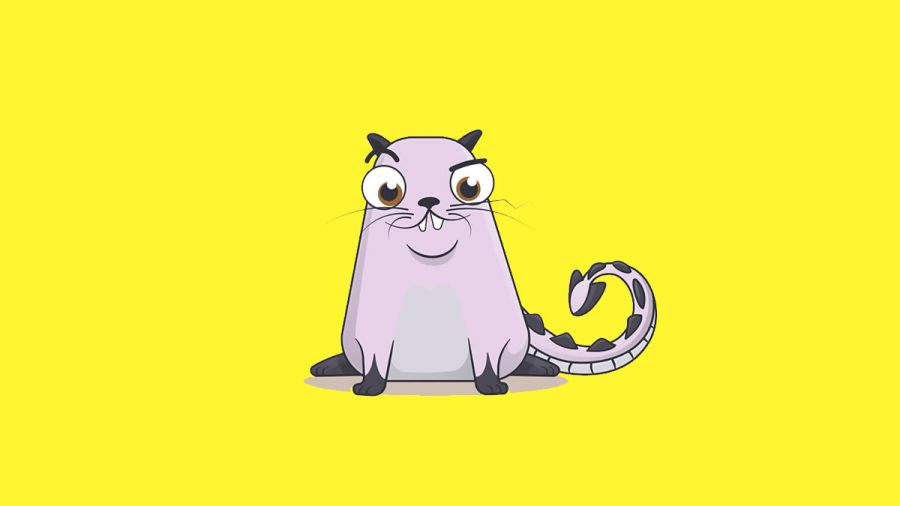What are NFTs?
CryptoPress
NFTs, or Non-Fungible Tokens, are a new form of digital asset that represent real-world objects like art, music, and in-game items. They are bought and sold online, frequently with cryptocurrency, and they are generally encoded with the same underlying software as many cryptos.
What this means is that an NFT is not fungible: each one is unique. And if one has been sold, there can be no other exactly like it. This makes them similar to collectibles like baseball cards or rare coins—but because they’re digital, you can trade them more easily than you could sell your collection at a garage sale (even though some people still do).
NFTs aren’t just for collecting; they have practical applications as well. For example, if someone buys an NFT representing a piece of art by Jackson Pollock (which may or may not exist), then they could use that NFT to prove ownership of their copy without having to show it off to anyone else physically.
The first major use of NFTs was when CryptoKitties was released in November 2017 by Axiom Zen.
How do NFTs work?
Instead of creating tokens for each physical item that you want to sell, with an NFT you can create one token that represents all the items in your collection or portfolio. You can then sell this token on a decentralized marketplace and it will be recorded on the blockchain. This makes it easy to trade your assets quickly, safely, and securely.
For example, let’s say you make some artwork and want to sell it online. You could create an NFT for that piece of art, but it would only be available once. The next time someone wants to buy the same artwork they won’t be able to because it already exists on the blockchain.
Why are NFTs so important?
To understand why an NFT is so important, let’s look at the example of a collectible coin. Collectible coins are valuable because they’re unique—you can’t break them down into smaller parts and make more coins out of them. This means that each coin has its own intrinsic value and can’t be exchanged for another object of equal value.
When we think about digital assets, however, we usually think in terms of fungibility: if I have 100 bitcoins and someone has 100 bitcoins, then we’re equal. But what happens when we want to create a digital asset that isn’t interchangeable? That’s where NFTs come into play.
Each NFT has its own set of attributes and characteristics—the same way that each Mona Lisa painting is unique, so too are the NFTs that represent them.
Thanks to the blockchain, we now have the ability to create digital assets that can be used as tangible goods. These are Non-Fungible Tokens (NFTs). Even if they are digital in nature, NFTs can be unique and therefore distinguishable from each other, which makes them different from traditional fungible tokens.
NFTs practical applications
Art:
NFTs are increasingly being used in art, due to the ability to provide proof of authenticity and ownership of digital or reproducible artwork, which would otherwise have to deal with the possibility of mass reproduction and unauthorized distribution over the internet. Platforms such as Superrare or Nifty Gateway that use the Ethereum blockchain have specialized in the commoditized transactions of digital art, through sale, resale, and auction.
Games:
One of the most common applications for NFTs is games. The value of NFTs can be derived from their scarcity and utility. For example, if an item is rare and useful in a particular game, it will likely have more value to players than an item that is less rare or less useful.
NFTs allow assets to be traded on third-party markets without the permission of the game developer. This allows players to sell their assets (which they own) on secondary markets like OpenSea or Rare Bits where they can sell them for real money.
Some private online communities have formed around the confirmed ownership of certain versions of NFTs. For instance, Etheremon allows users to buy and sell unique monster tokens on its platform. This allows users to create their own personal collections which they can then trade with other players who also want to collect specific monsters or breeds of monsters. Users can also use these tokens as collateral in games such as poker or blackjack where they wager their tokens against other players’ tokens instead of money or other assets like other digital currencies like bitcoins or ethers.”
Metaverse:
The metaverse is a term used to describe an interconnected universe of virtual spaces that can be accessed through various technologies such as VR or AR headsets. Although the concept of the metaverse has been around for decades, it has become increasingly popular in recent years due to the rise of blockchain technology.
Music:
In the case of music, blockchain and network-enabled technology have given musicians the opportunity to publish their work as non-fungible tokens. As their popularity grew in 2021, NFTs were used by artists and musicians to recover lost revenue due to the COVID-19 pandemic of 2020.
On March 3, 2021, rock band Kings of Leon became the first to announce the release of a new album, When You See Yourself, in the form of an NFT that generated a reported $2 million in sales.
Other musicians who have used NFTs include U.S. rapper Lil Pump, visual artist Shepard Fairey in collaboration with record producer Mike Dean, and rapper Eminem.
Movies:
One of the main uses of NFTs in the film industry is to increase the quality and variety of content available to viewers. NFTs allow filmmakers to create niche content that would not otherwise be profitable or interesting to viewers.
Another way that NFTs can be used in this industry is for movie memorabilia. There are many collectors who want to own pieces of film history or props from their favorite movies. Some people even like having autographs on these items so they can show them off at home or give them away as gifts.
Types of NFTs
There are two standards for NFTs: ERC-721 and ERC-1155. The first was created by Ethereum in 2017 and has become the most widely used standard. The newer standard was developed by Enjin in 2019, and it’s intended to offer more flexibility than ERC-721.
ERC-721 focuses on creating unique digital assets that can be traded on exchanges or within games. It’s designed to work with smart contracts and other blockchain-based applications.
ERC-1155 provides a “true blockchain gaming experience.” It allows for more complex items, such as weapons with different attributes or abilities, each with its own history of ownership and use within the game world.
Controversy around NFTs
Energy consumption
The NFTs on the Ethereum blockchain have been criticized due to the excessive energy expenditure caused by their creation.
NFTs are unique digital assets that can be created and owned by users on a blockchain. They can take many different forms, including virtual skins for games or collectible cards for trading card games like Magic: The Gathering.
The controversy surrounding NFTs stems from the fact that they must be created through a process called minting, which requires an enormous amount of processing power from the Ethereum network. This process is known as proof-of-work (PoW). In order to ensure that all transactions are valid and unique, PoW requires rigorous checking of each transaction before it can be added to the blockchain. PoW also prevents hackers from tampering with data stored on the blockchain by requiring them to solve complex mathematical problems before they can add new blocks of data onto the chain.
A study conducted by researchers at ETH Zurich and Lancaster University in the UK found that using Ethereum to create non-fungible tokens (NFTs) involves high energy costs and generates significant CO2 emissions. The findings were published in an article titled “Life Cycle Assessment of Non-Fungible Tokens on Ethereum” published in Nature Communications.
In this sense, the Ethereum network is migrating from proof-of-work to proof-of-stake, which is expected to solve the problem of energy consumption.
Plagiarism
There have been cases where an NFT has been created that copies a work of art without the permission of the original artist, who then sells it as their own; this can happen even if they have never seen the original. As a result, artists are finding it hard to make money from their work and may be less likely to produce new pieces in the future.
To help with this problem, work is underway to add an authenticity mark on NFTs similar to Twitter’s blue checkmark or Facebook’s verified badge for accounts.
© 2024 Cryptopress. For informational purposes only, not offered as advice of any kind.
Latest Content
- REZ Airdrop: Increased Rewards and Early Access for Community
- Philippines Traders Fair 2024: Where Ambition and Expertise Unite
- Crypto Market Update: April 25, 2024
- Renzo’s Restaked ETH Depegs to $700: DeFi Platforms Gearbox and Morpho Face Liquidations
- Crypto Market Update: Insights and Trends for April 23, 2024
Related
- Non-Fungible Tokens: The Guide Non-fungible tokens (NFTs) are a new type of token which is represented by unique cryptographic units, meaning that each token has a unique value. ...
- What are NFT Avatars? The most common kind of asset created on the Ethereum blockchain network is non-fungible tokens (NFTs). ERC stands for “Ethereum request for comment” and refers to the network’s many phases of development. The most widely used standard is ERC20, which...
- NFTs are Forever: The Digital Art Revolution Has Begun Forever Digital Art While an NFT can be used to create a homeownership paper, the world’s attention is currently focused on digital art, music, and collectibles. After one piece was sold at auction for $69 million on Thursday, a form...
- MicroStrategy Announces Second Quarter 2021 Financial Results July 29, 2021 04:01 PM Eastern Daylight Time TYSONS CORNER, Va.–(BUSINESS WIRE)–MicroStrategy® (Nasdaq: MSTR), the largest independent publicly-traded business intelligence company, today announced financial results for the three-month period ended June 30, 2021 (the second quarter of its 2021 fiscal year)....





